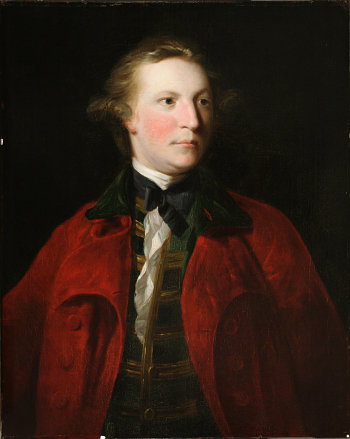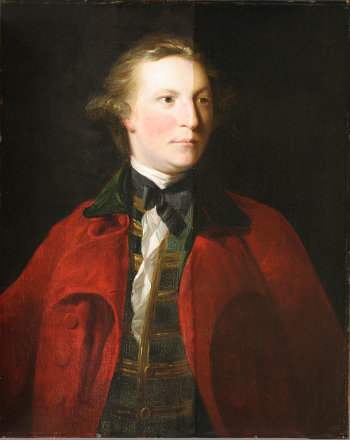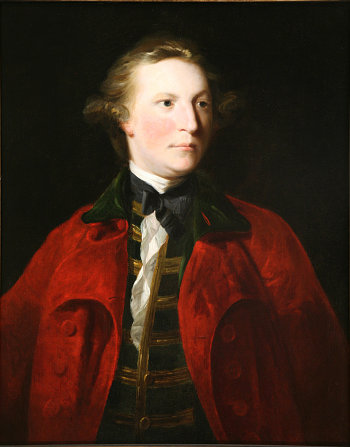TITLE:
Alexander 10th Earl of Eglington
TECHNIQUE: Oil on canvas
DIMENSIONS: 700 x 550 mm
FRAME: Wooden, gesso moulded, gilded gold
TREATMENT: November 2008 - January 2009
CONDITION REPORT
SECONDARY SUPPORT
This work has a 5-member mortise-and-tennon stretcher (W: 20 mm T: 65 mm), 10 keys are present. The general condition is good. The stretcher may well be a later addition, as the painting has been commercially lined.
The following inscriptions appear on the verso:
βJames Bourlet & Sons, Ltd.,
Fine Art Packers, Frame Maker
C 23863
17 & 18, Nassau Street,
Mortimer Street, W.
Phone;- Museum 1817 & 7588β
The label is seen on the right of the cross member on fine pulp paper printed in black ink print. To the left of this is a label that reads β54β. This is on a similar type of paper and ink. On the top left there is a label that reads β6109β, again using similar paper and ink.
PRIMARY SUPPORT
The primary support is a medium-weight tabby weave canvas. The lining canvas is of the same weave but slightly thinner in weight. The condition of the lining canvas is good and the primary support is sound. Evenly placed copper tacks attach the canvas to the stretcher. The canvas turn- over edge (W: 38 mm) is further adhered with staples. The tacking margin is 7 mm in width. Some dirt is caught between the canvas and stretcher.
GROUND
The ground appear to be cream in colour. The ground layer is lifting up with the cupping of the paint layer and is thus not in a sound condition.
PAINT LAYER
Brush strokes can be seen clearly, and the paint is fairly even with slight impasto in the highlights. Extensive drying cracks can be seen in the red jacket and finer drying cracks in the green under jacket. Age cracks can be seen in the face. The presence of over-paint is not clearly seen as a separate under ultraviolet light.
VARNISH LAYER
The natural resin varnish layer is discoloured and a layer of surface dirt covers this. This is not the original varnish.
TREATMENT CARRIED OUT
- Photographic record was made and this was maintained throughout treatment.
- Tests were carried out to remove the surface dirt. After the appropriate reagent was found, cleaning proceeded safely and effectively. Cleaning proceeded using a swab stick.
- Following tests including a safety margin-cleaning test, an organic solvent was found to remove the discoloured varnish layer safely and effectively. Cleaning proceeded using a swab stick. During varnish removal, it was found that there was a layer of over-paint in the areas of the drying cracks.
- Over-paint was present covering all the drying cracks and, after testing, a mixture of organic solvents were used to remove this.
- Dirt was removed from between the canvas and the stretcher bar and the back of the canvas was cleaned. The keys were secured.
- An isolating brush conservation varnish was applied. Losses were retouched and a final conservation varnish was applied.
- The frame was cleaned; both front and back, losses filled and retouched and the painting secured using brass plates.
The final treatment has resulted in a surprising revelation of the complementary colour harmonies used by Reynolds and has emphasised the immediacy of his painting technique.



